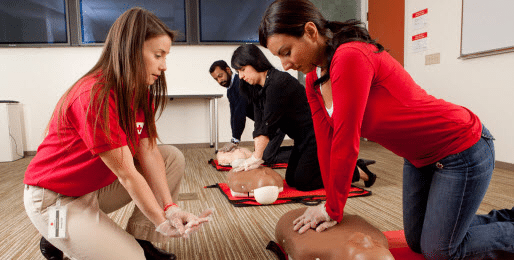
[cs_section id="" class=" " style="margin: 0px; padding: 45px 0px; " visibility="" parallax="false"][cs_row id="" class=" " style="margin: 0px auto; padding: 0px; " visibility="" inner_container="true" marginless_columns="false" bg_color=""][cs_column id="" class="" style="padding: 0px; " bg_color="" fade="false" fade_animation="in" fade_animation_offset="45px" fade_duration="750" type="1/1"][cs_text id="" class="" style="" text_align=""]The risk of early death from cancer drives us to buy sunscreen with high SPFs and sign up for yearly mammograms; the fear of developing diabetes or heart disease has us buying brightly colored veggies for lunch and pounding out the miles on the gym’s treadmill.[/cs_text][cs_text id="" class="" style="" text_align=""]Good things to do? Yes. But not the most important things to do to protect your health.[/cs_text][cs_text id="" class="" style="" text_align=""]“Sudden cardiac arrest (SCA) is a leading cause of death among adults over the age of 40 in the United States and other countries. In the US alone, approximately 326,200 people of all ages experience EMS assessed out-of-hospital non-traumatic SCA each year and nine out of 10 victims die,” according to the Sudden Cardiac Arrest Foundation a national community benefit 501(c)(3) organization based in Pittsburgh, Pennsylvania[/cs_text][cs_text id="" class="" style="" text_align=""]To put this number in context, the Sudden Cardiac Foundation points out on their website that more people die each year from SCA than from “Alzheimer’s disease, assault with firearms, breast cancer, cervical cancer, colorectal cancer, diabetes, HIV, house fires, motor vehicle accidents, prostate cancer and suicides combined.”[/cs_text][cs_text id="" class="" style="" text_align=""]And most out-of-hospital cardiac arrests occur in the home.[/cs_text][x_feature_headline level="h2" looks_like="h3" icon="lightbulb-o"]SCA Can Happen to Anyone, Anywhere, Anytime[/x_feature_headline][cs_text id="" class="" style="" text_align=""]Unfortunately, almost 90% of SCA victims die before reaching a hospital. But studies have found that many more victims can be saved if bystanders act quickly and begin CPR plus a shock with an automated external defibrillator (AED) – the most effective immediate treatment for cardiac arrest. (2)[/cs_text][cs_text id="" class="" style="" text_align=""]There are four time sensitive links that must occur rapidly for the victim to have a chance of survival, according to the American Heart Association. Research has shown that the first three links are directly related to patient survival.[/cs_text][cs_text id="" class="" style="" text_align=""]
[/cs_text][x_feature_headline level="h2" looks_like="h3" icon="lightbulb-o"]SCA Can Happen to Anyone, Anywhere, Anytime[/x_feature_headline][cs_text id="" class="" style="" text_align=""]Sudden cardiac death is different from a heart attack. Early recognition of symptoms is important in successful intervention.[/cs_text][cs_text id="" class="" style="" text_align=""] “Most sudden cardiac deaths are caused by abnormal heart rhythms called arrhythmias. The most common life-threatening arrhythmia is ventricular fibrillation, which is an erratic, disorganized firing of impulses from the ventricles (the heart's lower chambers). When this occurs, the heart is unable to pump blood and death will occur within minutes, if left untreated.”[/cs_text][cs_text id="" class="" style="" text_align=""]Although the risk of sudden cardiac arrest increases as you age, and the average age for SCA is 66, SCA can happen to anyone at any age. Each year, approximately 6,328 EMS assessed out-of-hospital cardiac arrests are reported in people 18 years of age and younger (1).[/cs_text][cs_text id="" class="" style="" text_align=""]For a chilling first person view of how a SCA looks in action, watch The Children’s Healthcare of Atlanta Facebook page video of “Claire,” a 17-year-old volleyball player collapsing from SCA and being revived by AED trained staff members. Thankfully Claire survived and so can many more if we all just understand SCA interventions a little better.[/cs_text][cs_text id="" class="" style="" text_align=""]So before you buy that next vegetable tray or hunt for your favorite fat free yogurt, take a few minutes to find a CPR/AED training class in the San Diego area. The Beating Heart Center has training courses available every single day of the week, and their classes are certified by the American Heart Association and the American Health Safety Institute (AHSI). [/cs_text][cs_text id="" class="" style="" text_align=""](1) AHA Statistical Update, Heart Disease and Stroke Statistics -2015 Update, page e206 (2) Lindh, Wilburta Q; Pooler, Marilyn; Tamparo, Carol D.; Dhal, Barbara, Morris, Julie. 2013 Delmar’s Clinical Medical Assisting, page 179[/cs_text][/cs_column][/cs_row][/cs_section]